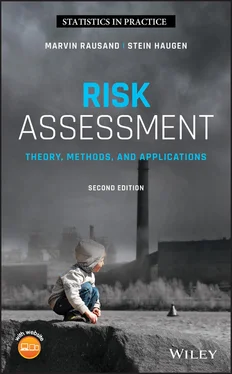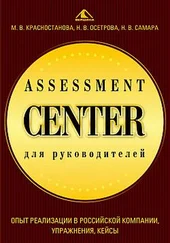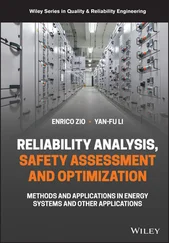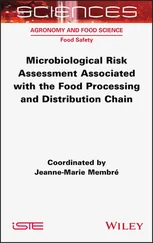The quality of the risk analysis should rather be measured in terms of how well it supports the decisions that we want to make based on the analysis. Some general criteria could then be that
The risk assessment provides support to the decision problem.
The documentation is such that decision‐makers can understand and use the results in their decision‐making.
The risk assessment should provide a sound basis for risk management.
Every reasonable effort has been made to secure the completeness, consistency, and correctness of the analysis.
The best available and relevant information has been used.
A risk analysis represents a model of a certain phenomenon that we are interested in, namely risk. The objective is to give a description and/or a quantification of what the risk is. Similarly to all models, a risk analysis is based on numerous simplifications. Modeling is always a balance between representing the phenomenon that we are concerned with and the efforts required to develop the model. For that reason, we try to leave out aspects that have limited influence on the results the model produce.
The effect of this simplification is that we always need to be careful if we attempt to apply an existing risk analysis to provide decision support for other decisions than the ones that the analysis originally was developed for. Even if it is the same phenomenon that we describe, there may be other aspects that are relevant to include in the model when the decision is changed. This has among others been observed when risk analyses that originally were developed to support design development of a system later has been used to support operations of the same system. This issue is discussed further in Chapter 16.
1 3.1 What is the difference between risk analysis and risk assessment?
2 3.2 What are the main steps in the risk assessment process and what are the main objectives/activities in each step?
3 3.3 Consider a railway line running between two cities, with crossings, stations, signals, and so on. Assume that you are going to do a risk assessment with the objective to determine the risk to people. How would you define and delimit the study object?
4 3.4 For the railway line in the previous problem, give some examples of generic events, specific events, and representative events.
5 3.5 For the same railway line, identify possible causes of the generic event “derailing” and see if these causes are applicable to all events if you define a set of representative events for “derailing.”
6 3.6 Assume that you have performed a risk assessment for a shipping company operating several large passenger ferries. You are going to present the results to three groups: The shipping company management, the safety department of the shipping company and to passengers. What would be different in the way that you present the results for the three groups?
7 3.7 A requirement for scientific work is that what we have done can be reproducible, which means that when using the same input and the same models, we should arrive at the same results. Will a risk assessment meet this requirement?
1 EU (1996). Council Directive 96/82/EC of 4 July 2012 on the control of major‐accident hazards involving dangerous substances. Official Journal of the European Union L 10/14.1‐1997.
2 EU (2012). Directive 2012/18/EU of the European Parliament and the Council of 4 July 2012 on the Control of Major‐Accident Hazards Involving Dangerous substances (Seveso III Directive). Official Journal of the European Union, L 197/1 24.7.2012.
3 Garrick, B.J. (2008). Quantifying and Controlling Catastrophic Risks. San Diego, CA: Academic Press.
4 IAEA (1994). Safety Assessment of Research Reactors and Preparation of the Safety Analysis Report. Safety Series 35‐G1. Vienna, Austria: International Atomic Energy Agency.
5 IAEA (2002). Procedures for Conducting Probabilistic Safety Assessment for Non‐Reactor Nuclear Facilities. Technical report IAEA‐TECDOC‐1267. Vienna, Austria: International Atomic Energy Agency.
6 ISO 12100 (2010). Safety of machinery – general principles for design: risk assessment and risk reduction, International standard ISO 12100. Geneva: International Organization for Standardization.
7 ISO 17776 (2016). Petroleum and Natural Gas Industries—Offshore Production Installations – Major Accident Hazard Management During the Design of New Installations. Tech. Rep. Geneva: International Organization for Standardization.
8 Mannan, S. (ed.) (2012). Lee's Loss Prevention in the Process Industries: Hazard Identification, Assessment and Control, 4e. Waltham, MA: Butterworth‐Heinemann / Elsevier.
9 NORSOK Z‐013 (2010). Risk and emergency preparedness analysis, Norsok standard. Oslo, Norway: Standard Norge.
10 NSW (2003). Hazard Identification, Risk Assessment, and Risk Control No. 3. Technical report. Sydney, Australia: New South Wales, Department of Urban and Transport Planning.
11 U.S. DOE (2004). Chemical Process Hazard Analysis. Tech. Rep. DOE‐HDBK‐1100‐2004. Washington, DC: U.S. Department of Energy.
1 1In the UK, the Seveso II directive is implemented as the control of major accident hazard (COMAH).
Chapter 4 Study Object and Limitations
4.1 Introduction
The risk assessment process for a study object was outlined in Chapter 3without clarifying how the term “study object” should be understood. This chapter explains how we interpret the term “study object,” and defines and discusses a number of additional terms that are used to describe, delimit, and classify the study object.
All the study objects in this book are systems that meet the requirements of the Newtonian–Cartesian world view, which is described briefly at the end of the chapter. Some general aspects related to modeling and analysis of the study object are introduced and discussed briefly. The chapter supplements several steps of the risk assessment process in Chapter 3.
We start by defining the notions of systems and sociotechnical systems and by introducing several system properties that may be used to describe and delimit the study object.
The term “system” is derived from the Greek word systema , which means an organized relationship among functioning elements. We define a system as follows:
A set of interrelated elements that are organized to carry out a specified function or a set of functions in a specific environment.
Systems are always designed and built to fulfill a predetermined purpose. Mathematically, a system  may be defined as the set
may be defined as the set

where  is the set of all the system components,
is the set of all the system components,  is the set of all relations between the components in
is the set of all relations between the components in  ,
,  is the set of all the system functions, and
is the set of all the system functions, and  is the set of all the attributes (i.e. performance characteristics) of the functions in
is the set of all the attributes (i.e. performance characteristics) of the functions in  .
.
Читать дальше

 may be defined as the set
may be defined as the set
 is the set of all the system components,
is the set of all the system components,  is the set of all relations between the components in
is the set of all relations between the components in  ,
,  is the set of all the system functions, and
is the set of all the system functions, and  is the set of all the attributes (i.e. performance characteristics) of the functions in
is the set of all the attributes (i.e. performance characteristics) of the functions in  .
.










